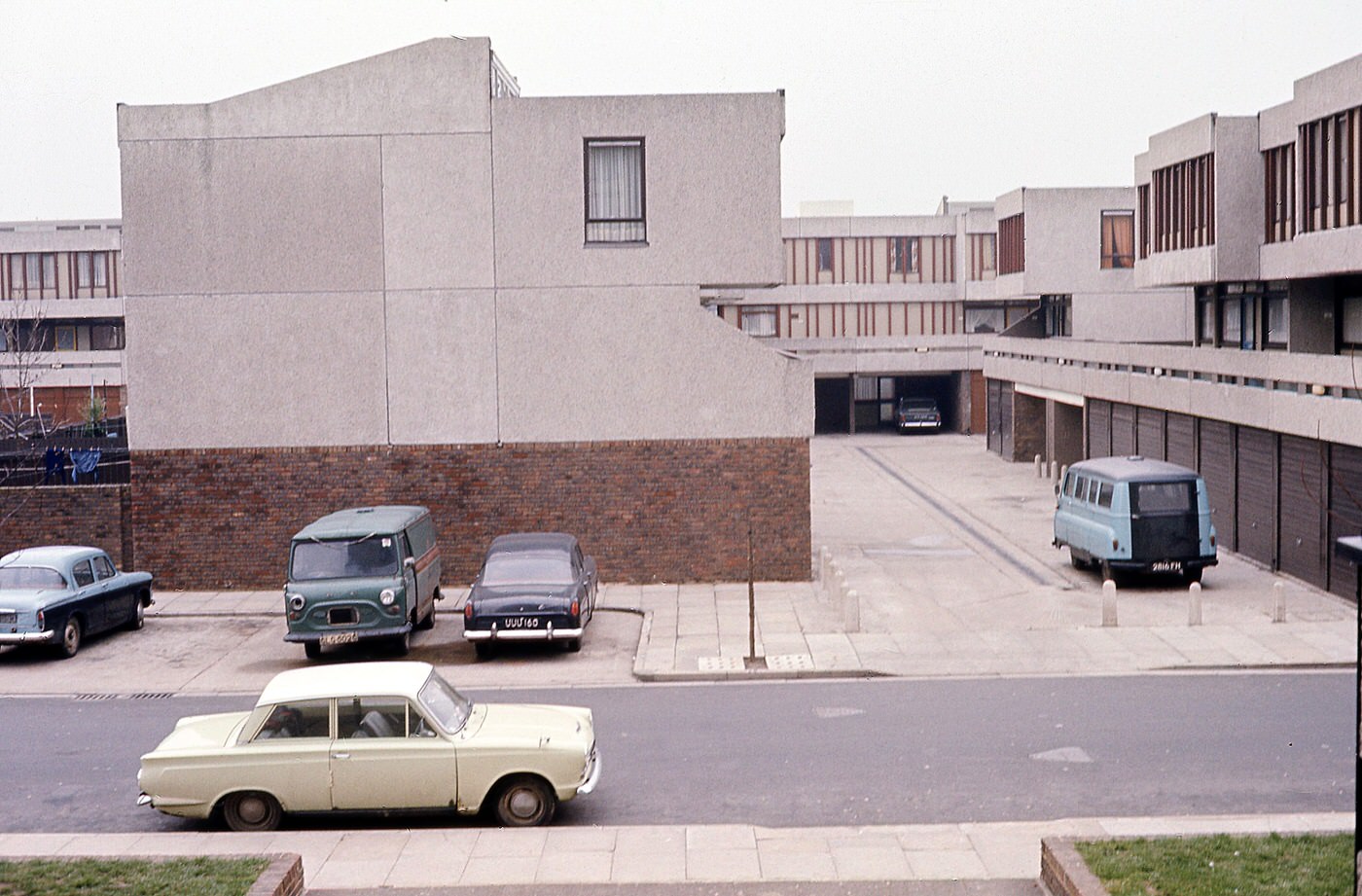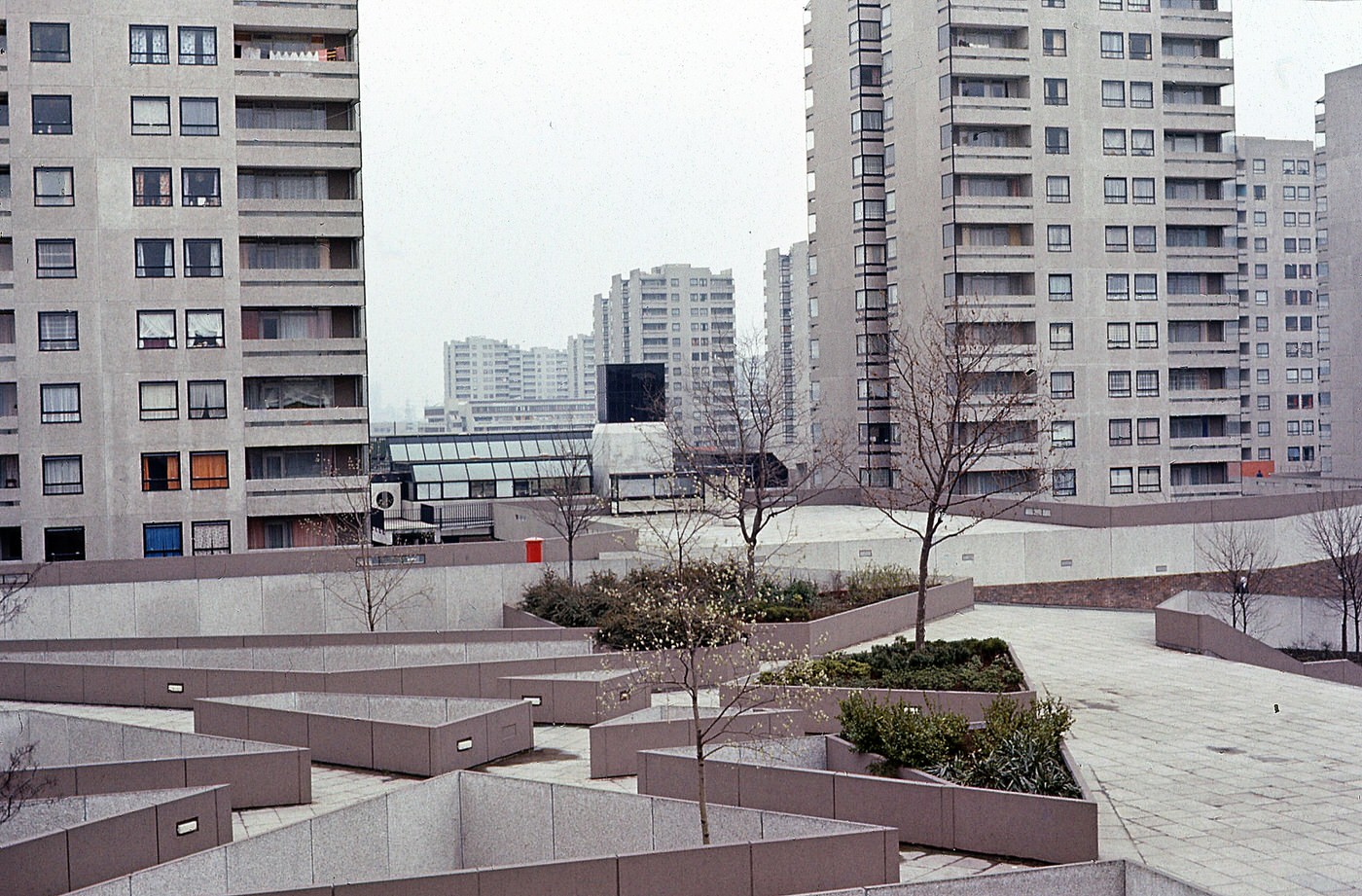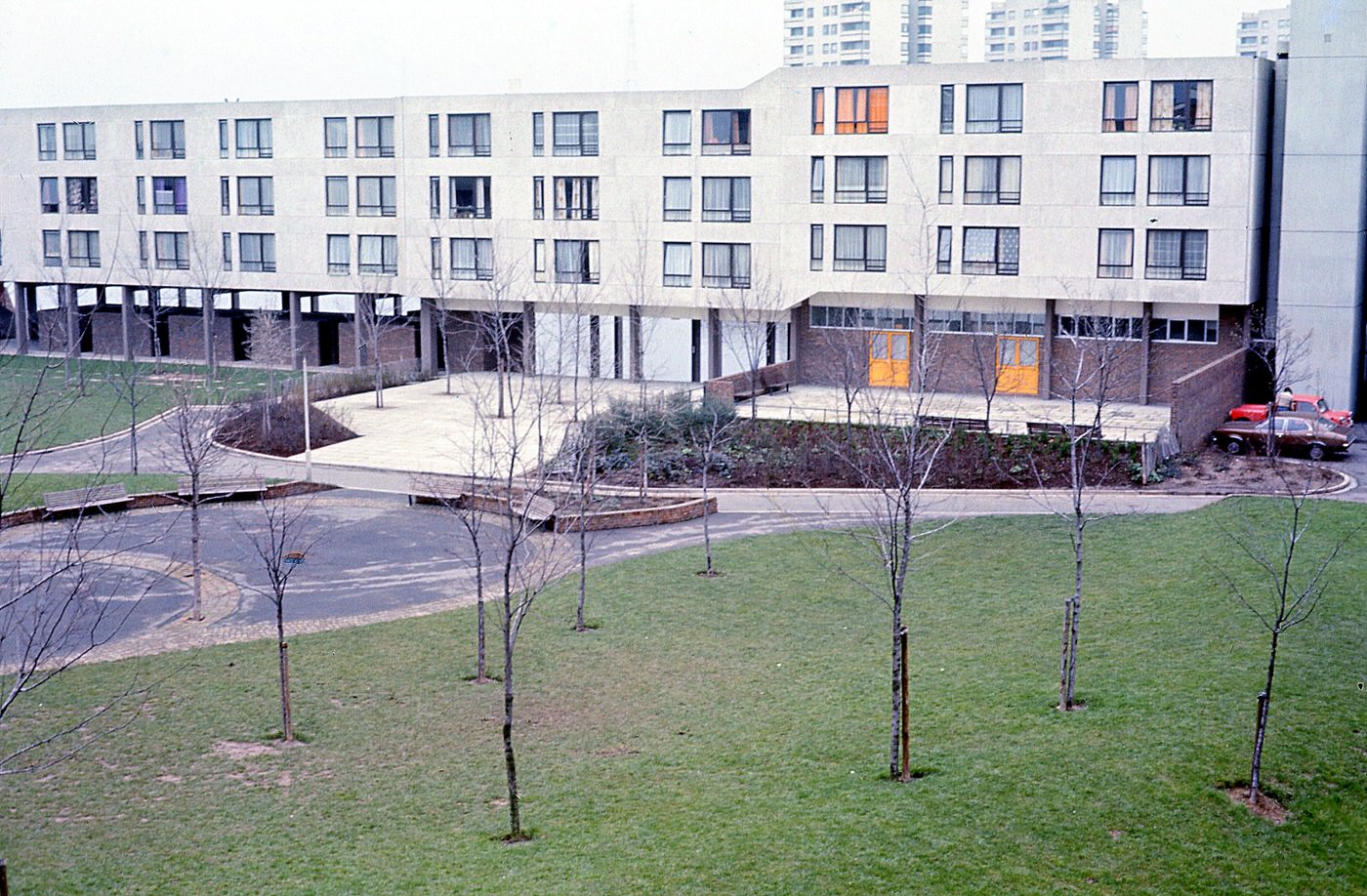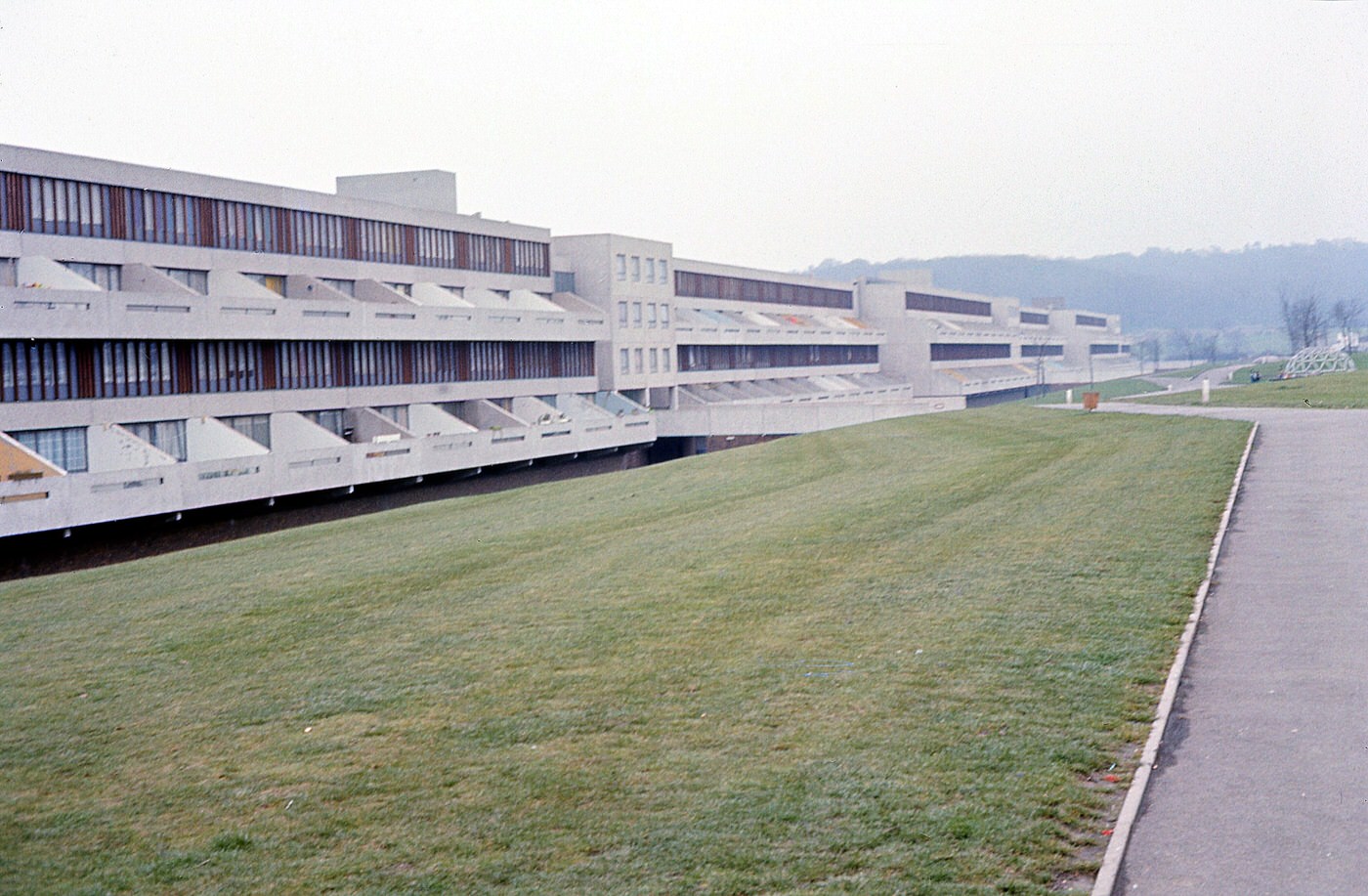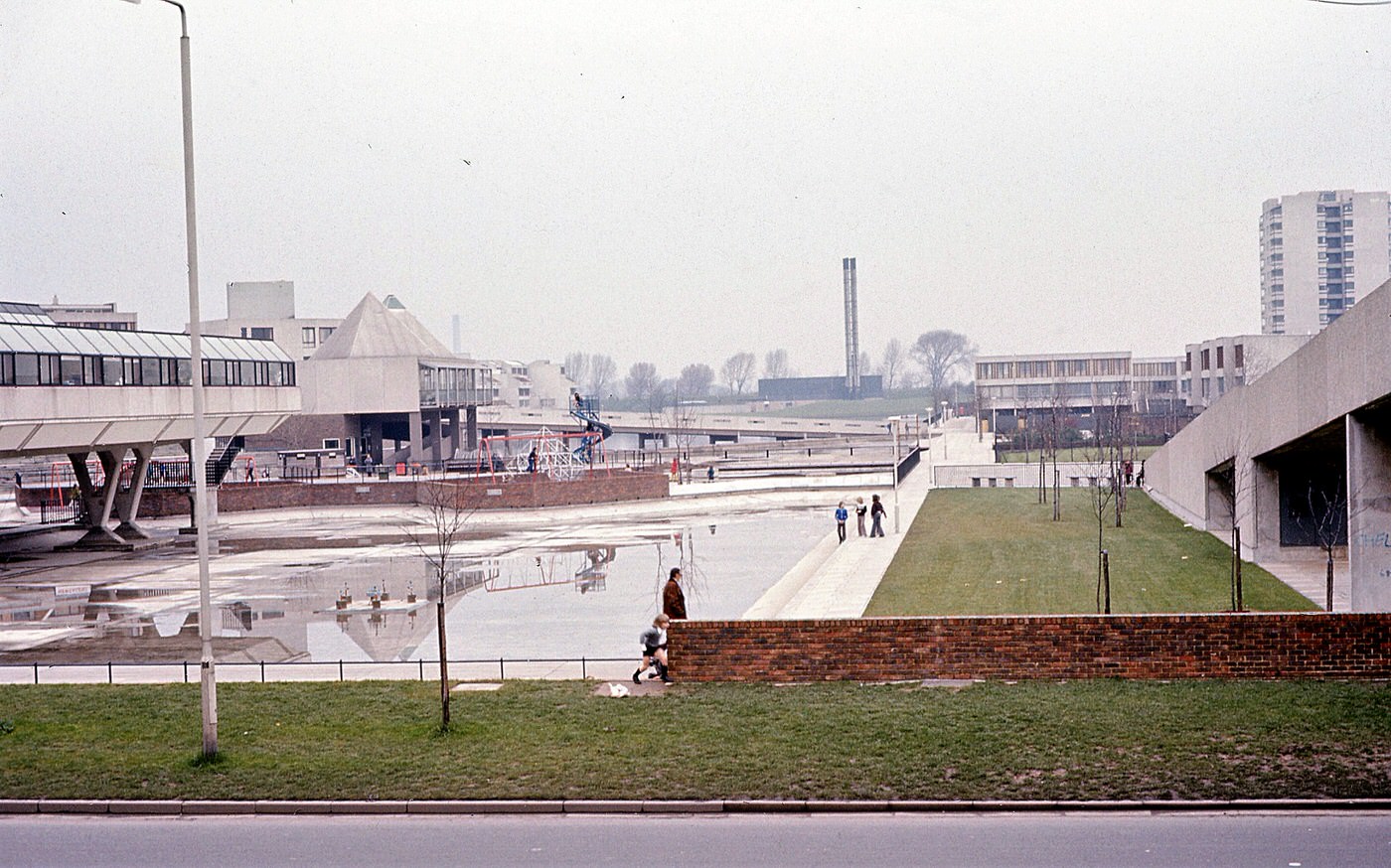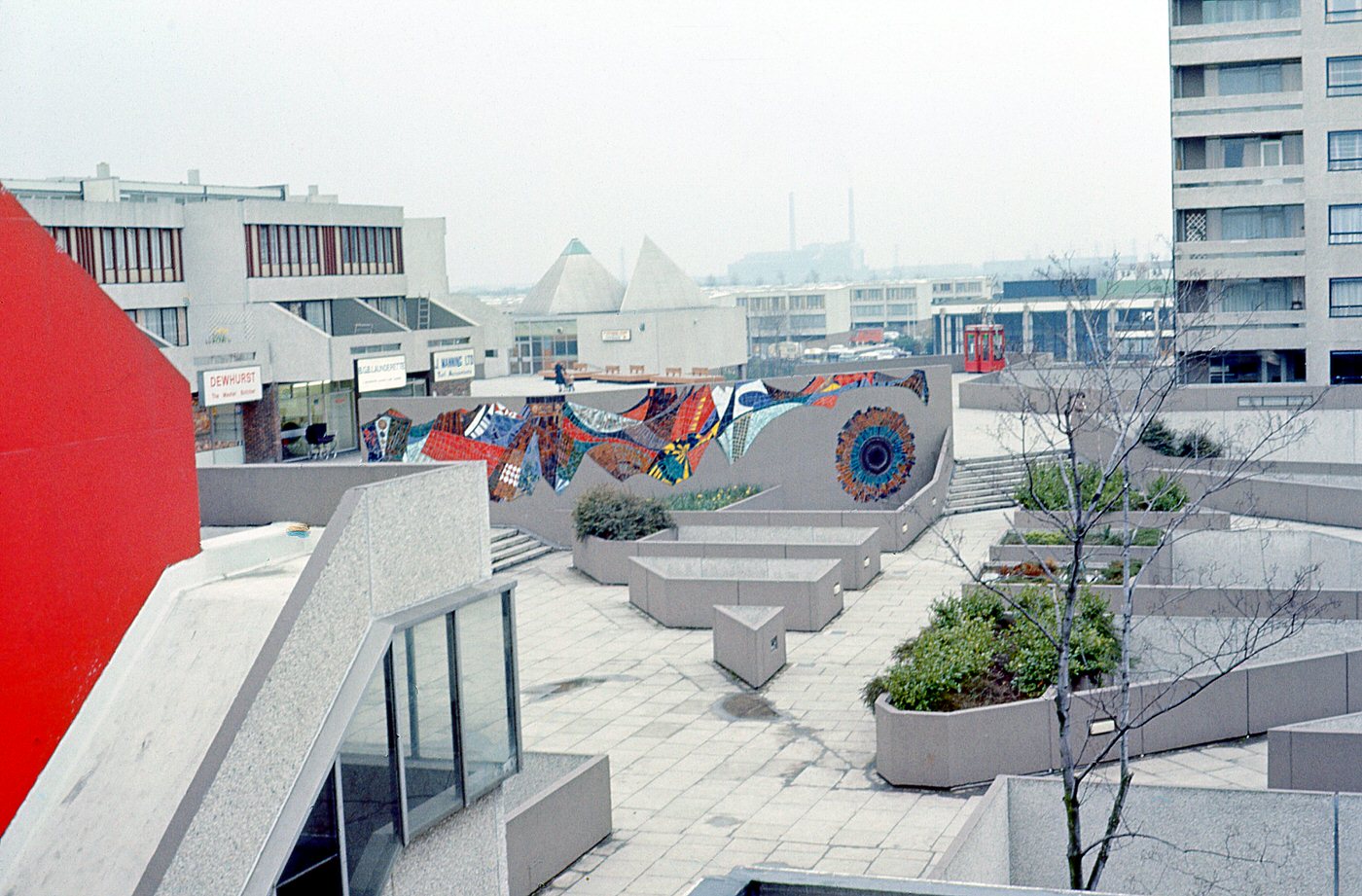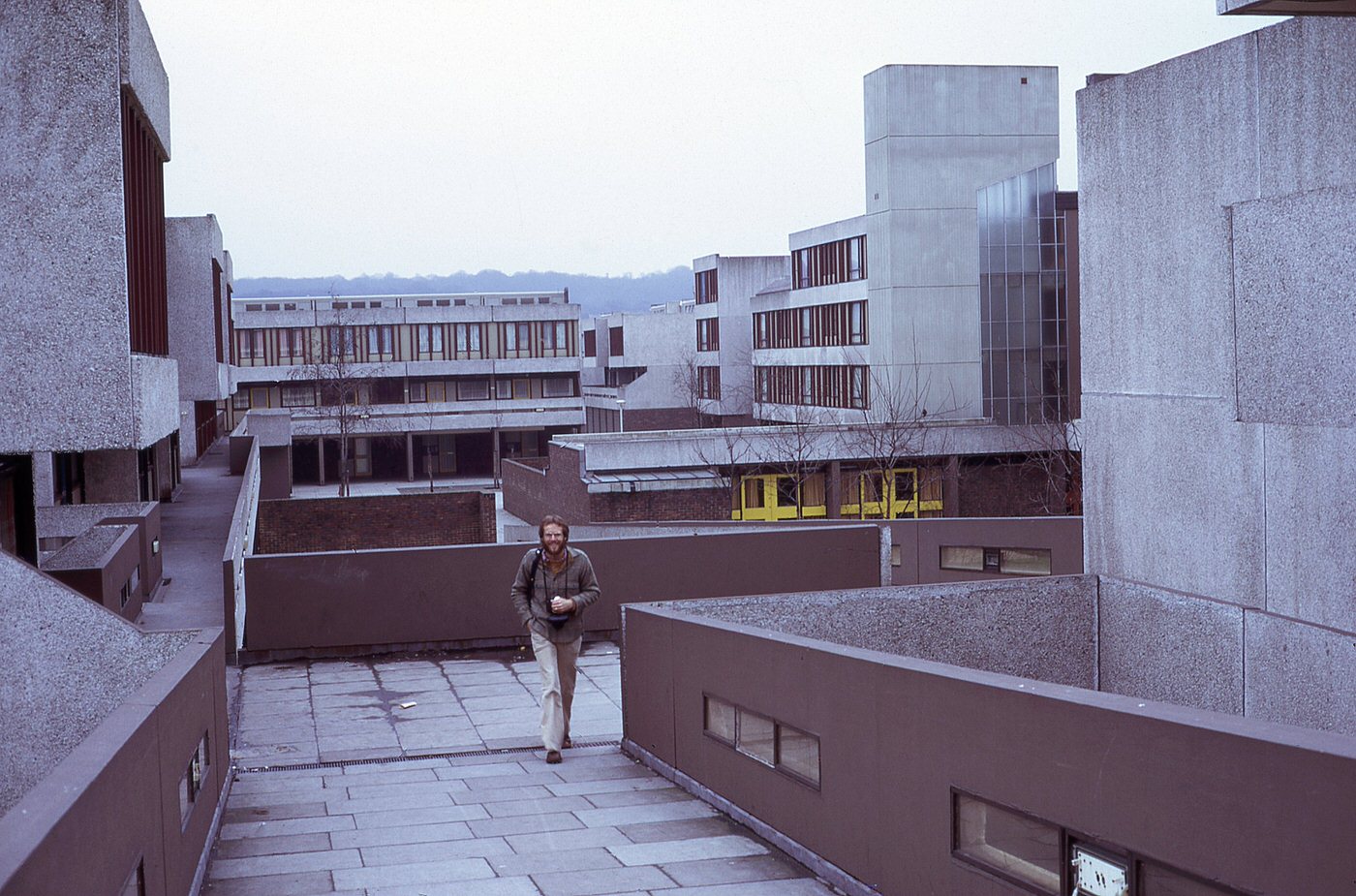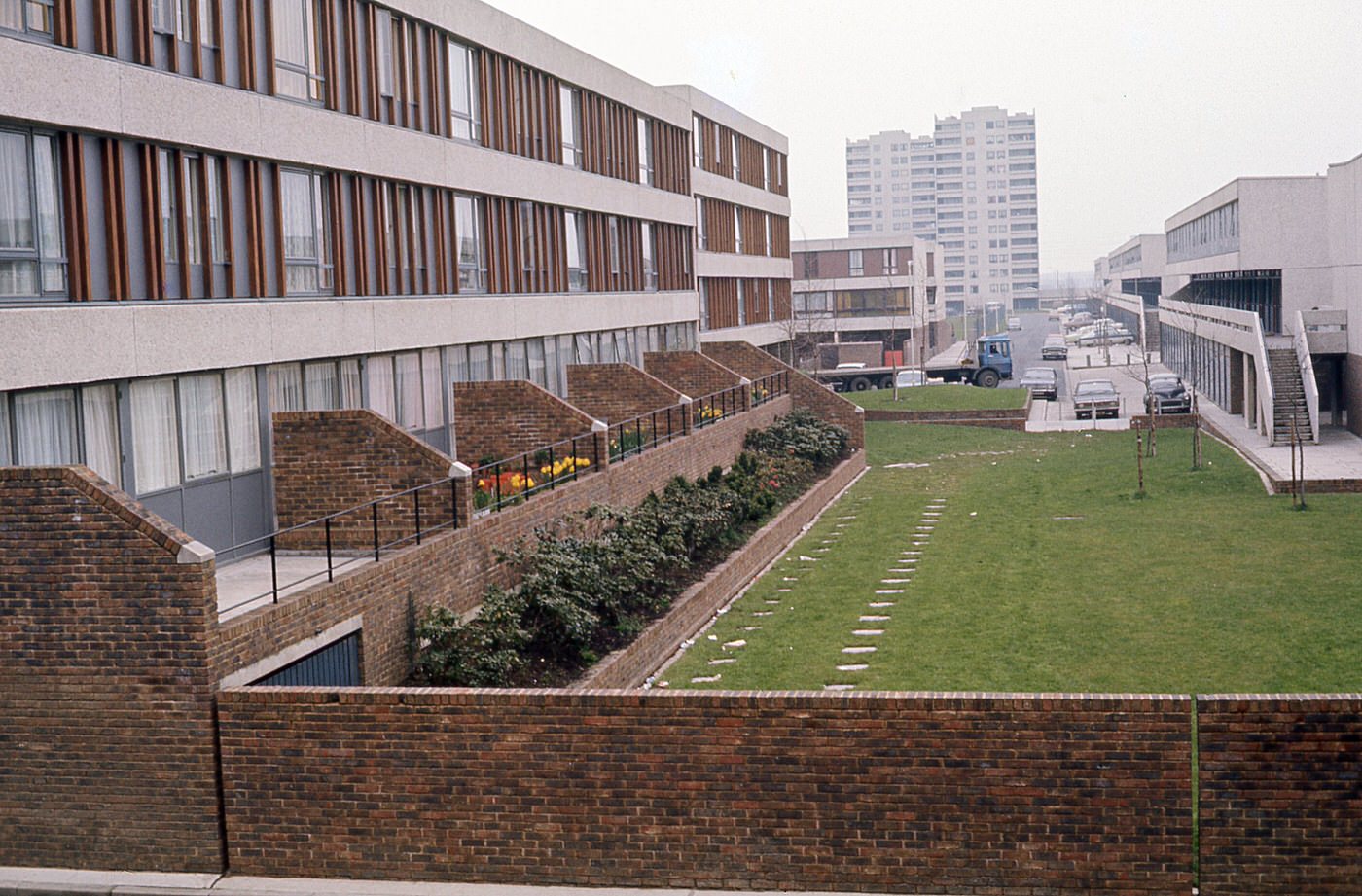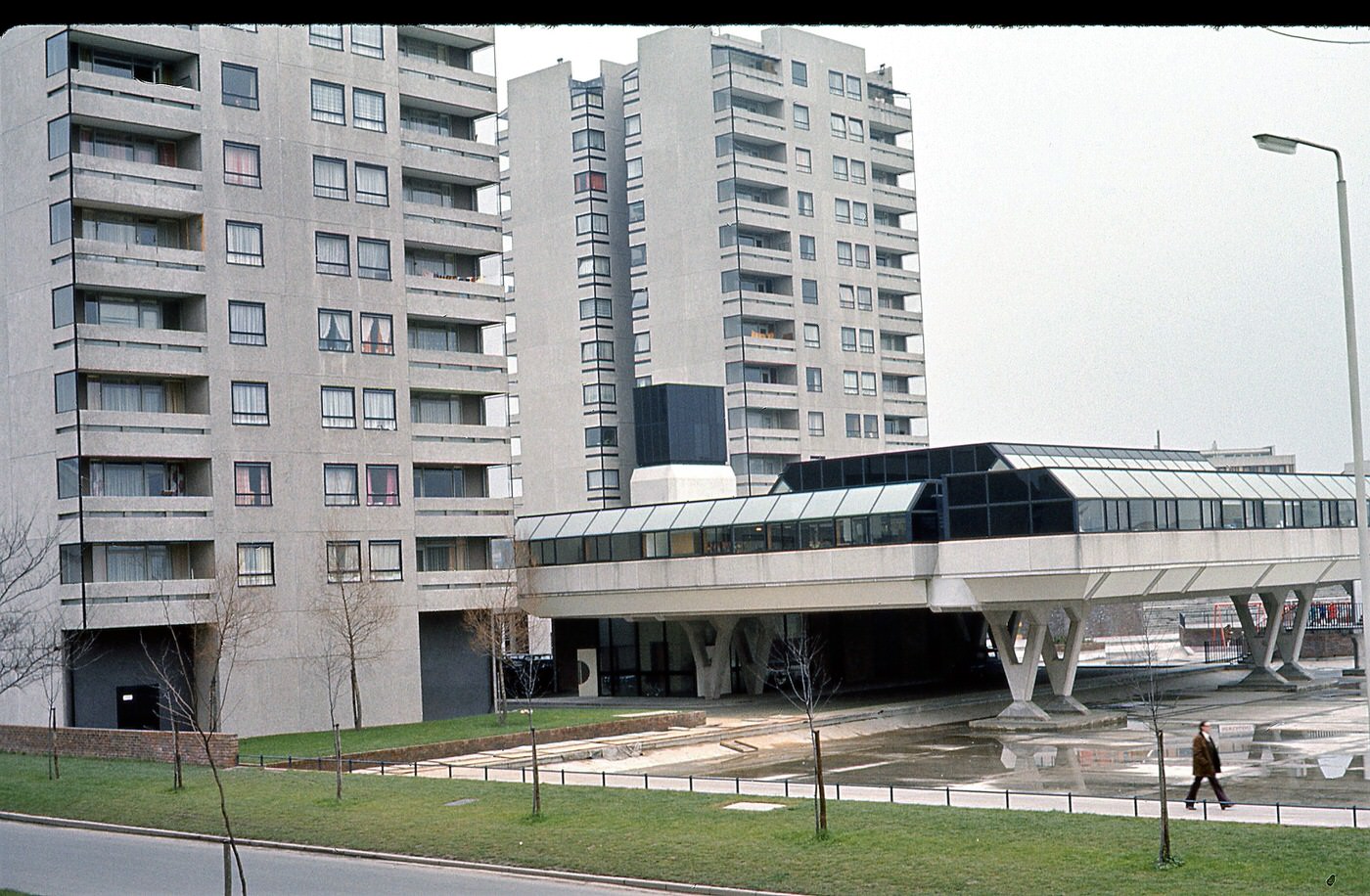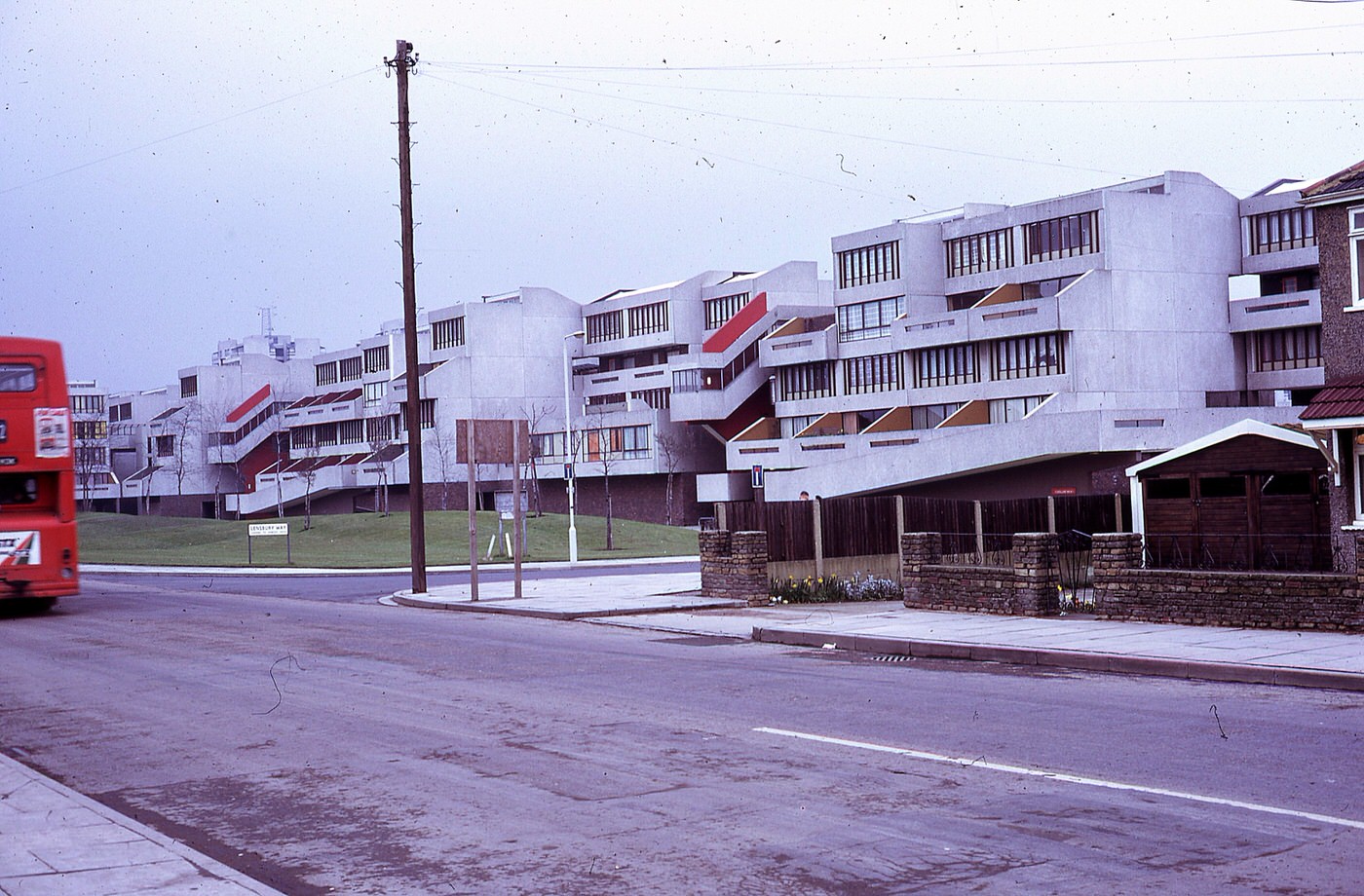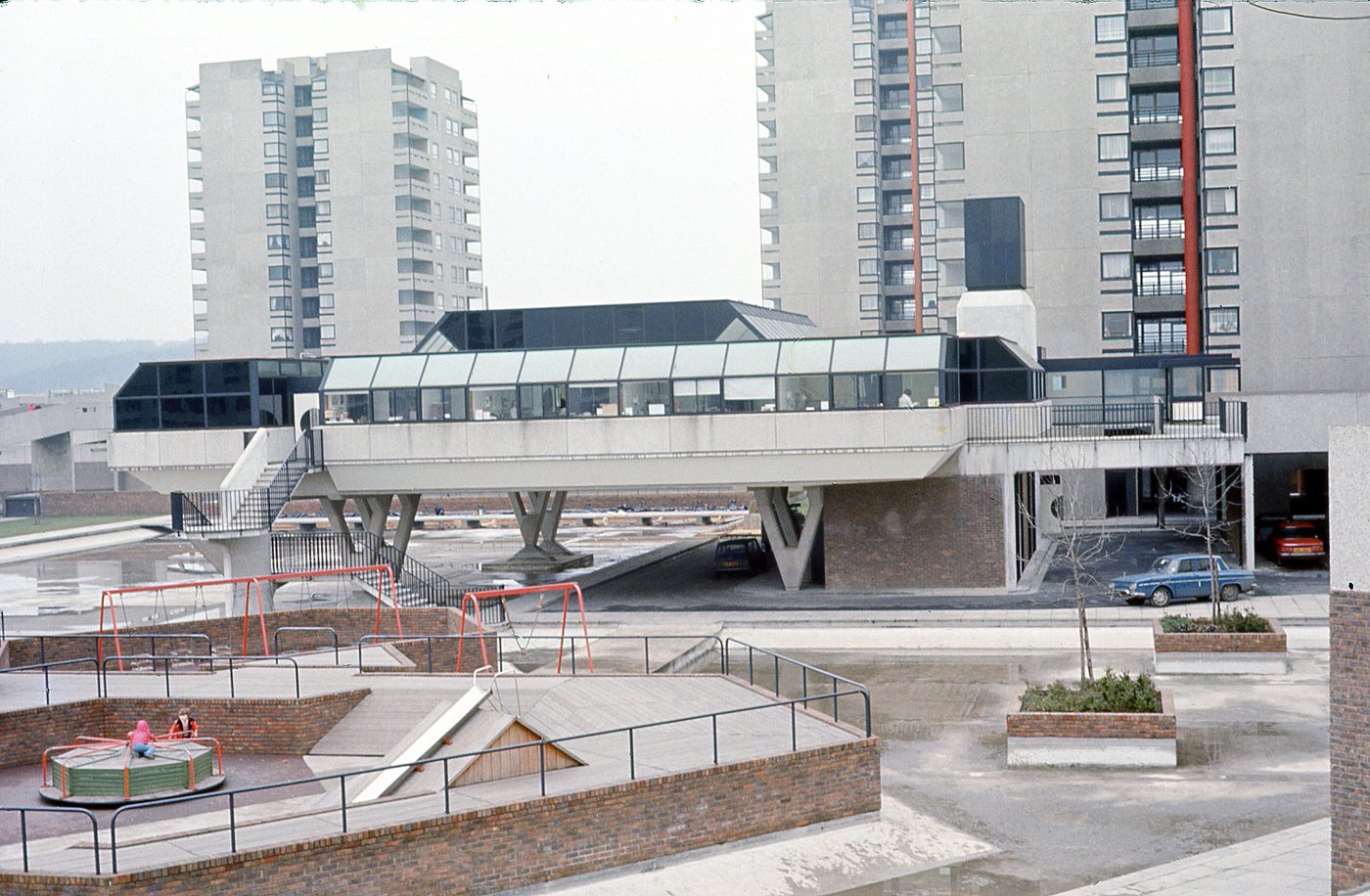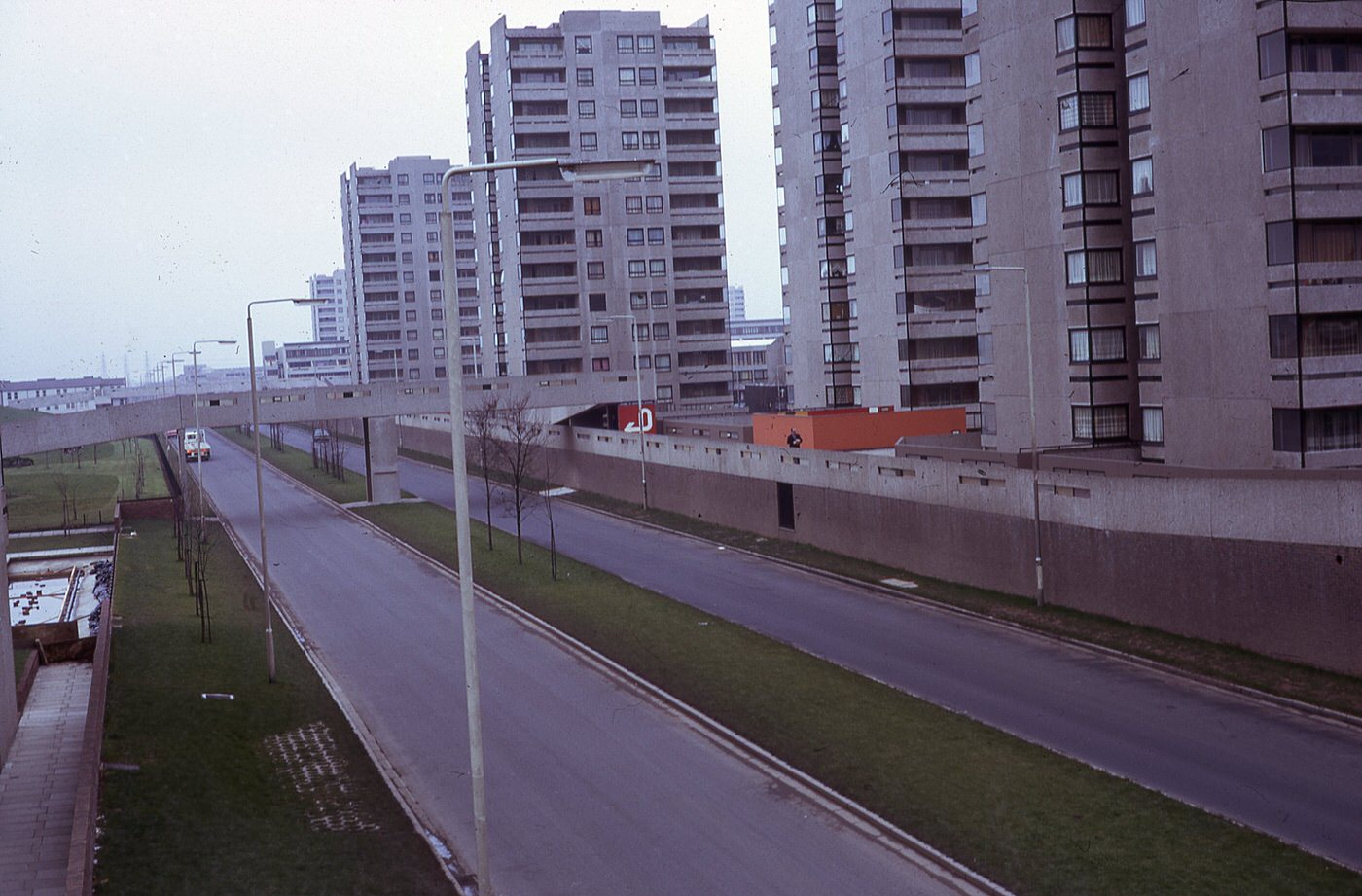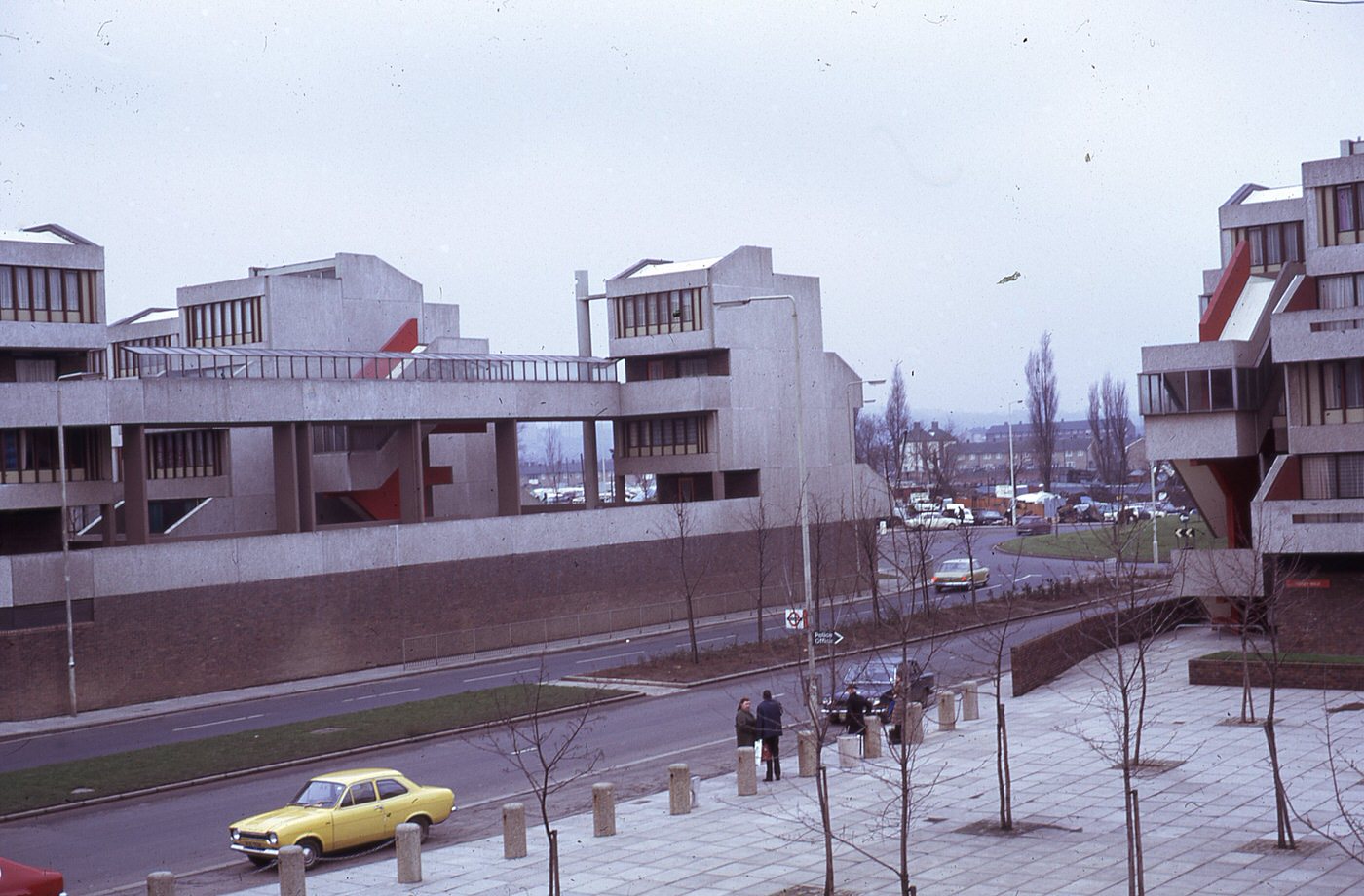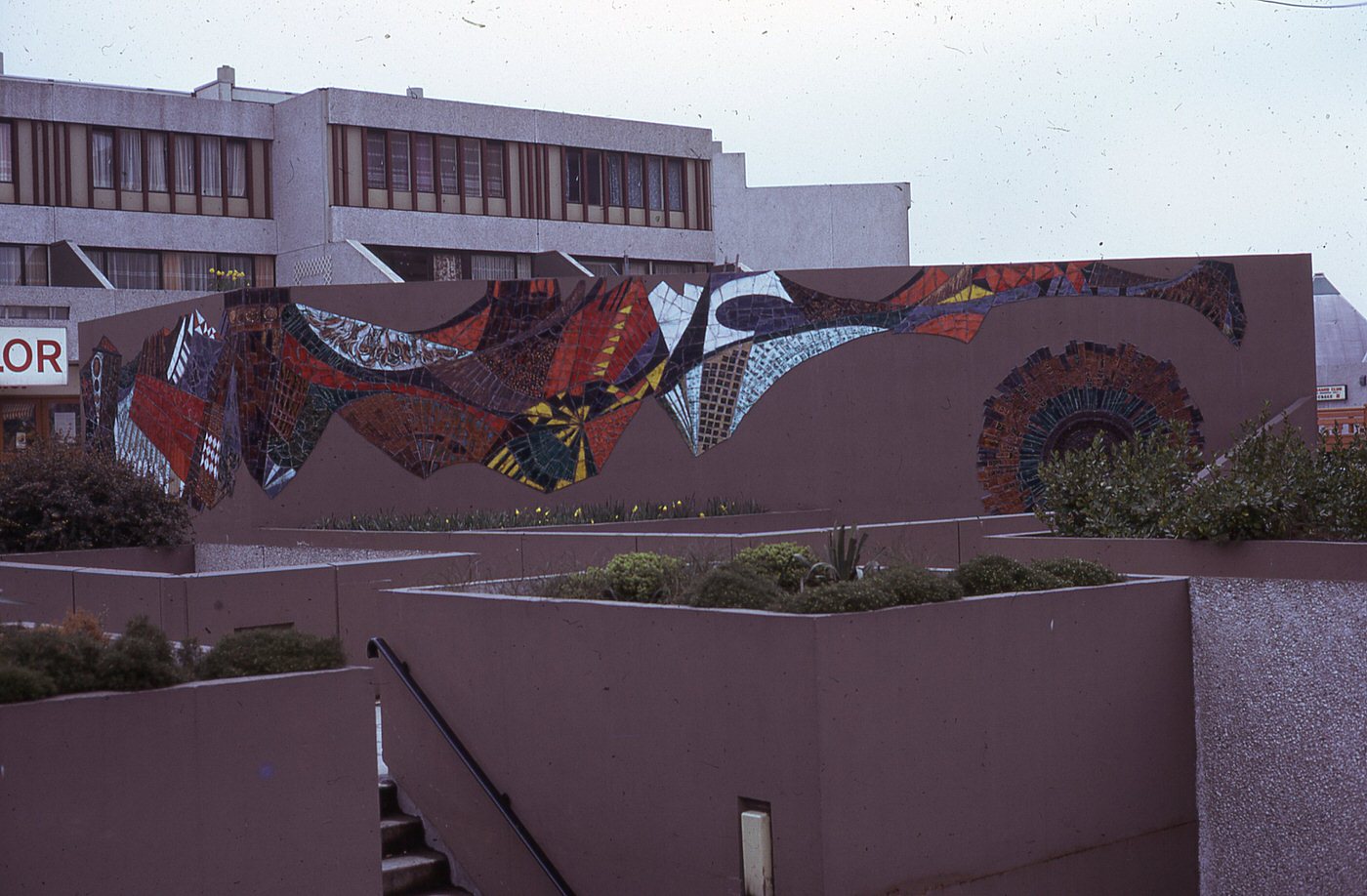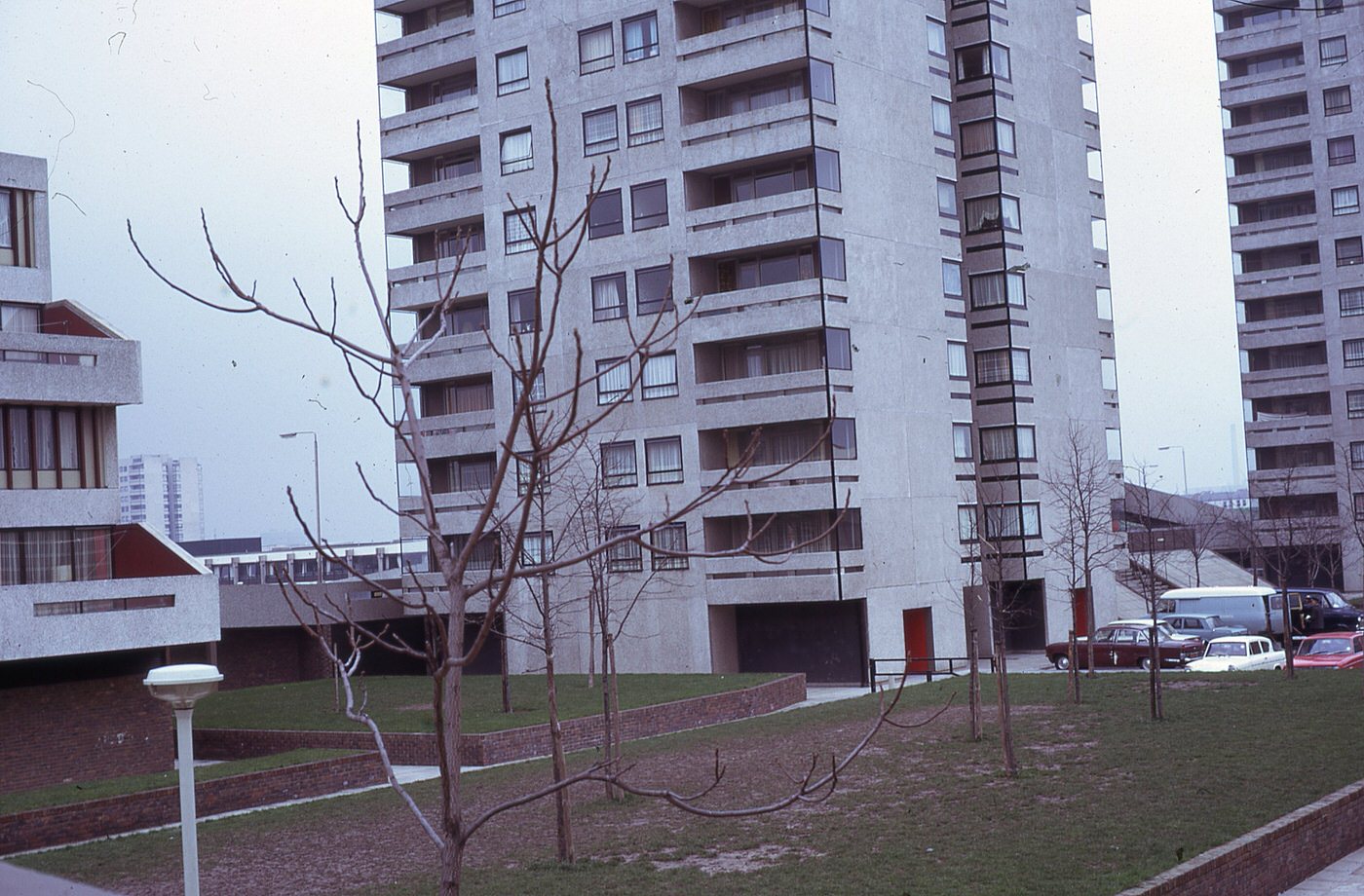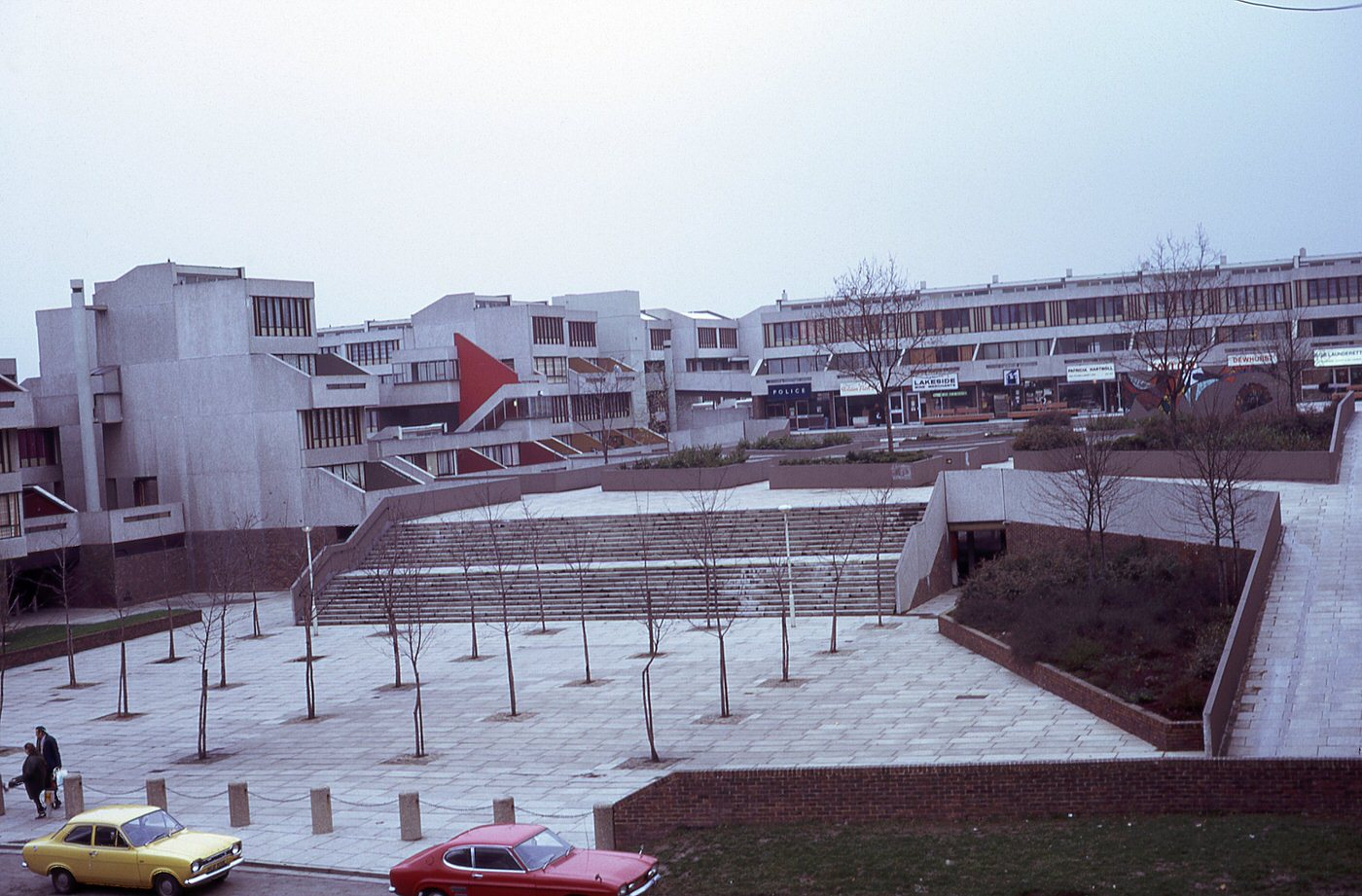Imagine a sprawling city rising from marshland, its buildings stark and imposing against the flat landscape. This was Thamesmead in the 1970s, a bold experiment in urban planning that aimed to create a futuristic utopia on the outskirts of London. Built on the site of a former munitions factory, Thamesmead was meant to be a self-contained community, complete with its own shops, schools, and leisure facilities.
However, the reality of Thamesmead was far from the utopian vision its planners had envisioned. Instead of a thriving community, it became a symbol of failed social engineering and architectural missteps.
The ambitious project began with good intentions. The Greater London Council envisioned a modern city that would address London’s housing shortage. They meticulously planned the layout, aiming for a diverse mix of residents who would live, work, and socialize within Thamesmead’s boundaries. Prospective residents were even interviewed to ensure the ideal balance of ages and backgrounds.
To combat the marshy terrain, architects designed buildings with raised walkways, creating a network of elevated paths connecting homes and amenities. This unique feature, intended to keep residents’ feet dry, inadvertently created isolated spaces beneath the walkways, fostering a sense of insecurity and unease.
But the grand plans for Thamesmead were never fully realized. The promised marina, bridge over the Thames, and train station never materialized. The lack of transportation options left residents feeling isolated and trapped. The envisioned bustling town center never quite came to life, leaving a void in the community’s heart.
As the years passed, Thamesmead’s reputation declined. The area became known as a dumping ground for “problem families” from other parts of London, further eroding the community spirit. The original residents who could afford to leave did, leaving behind those with fewer options.
The stark, concrete architecture, once seen as futuristic and innovative, became associated with social decay and urban blight. The very style that was meant to symbolize progress and modernity became a visual reminder of the project’s shortcomings.
Filmmaker Stanley Kubrick even chose Thamesmead’s brutalist landscape as the backdrop for scenes in his dystopian film, “A Clockwork Orange,” further solidifying the area’s association with bleakness and social unrest.


